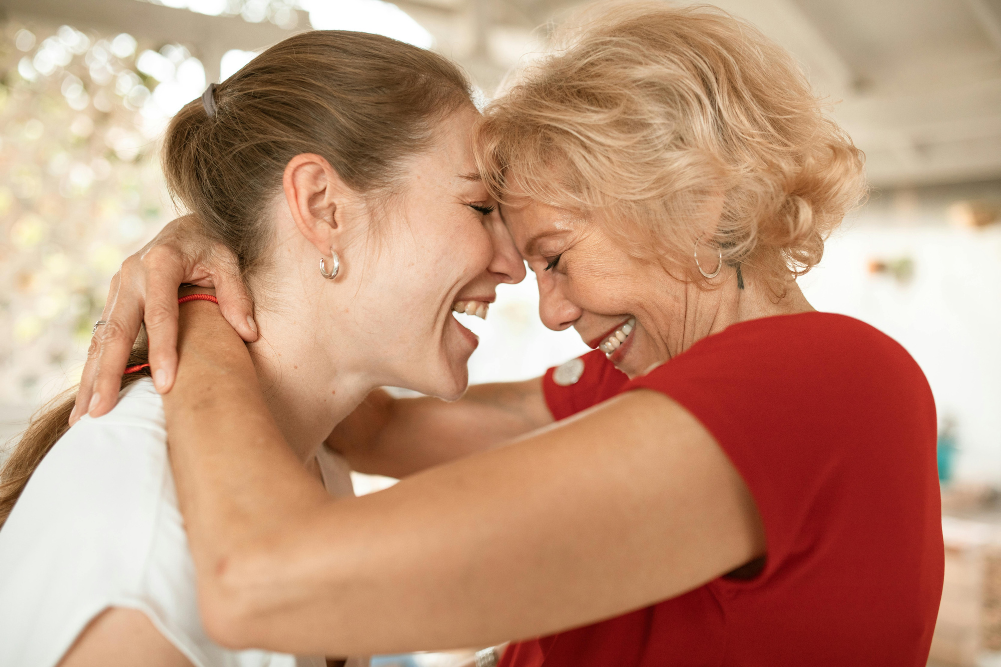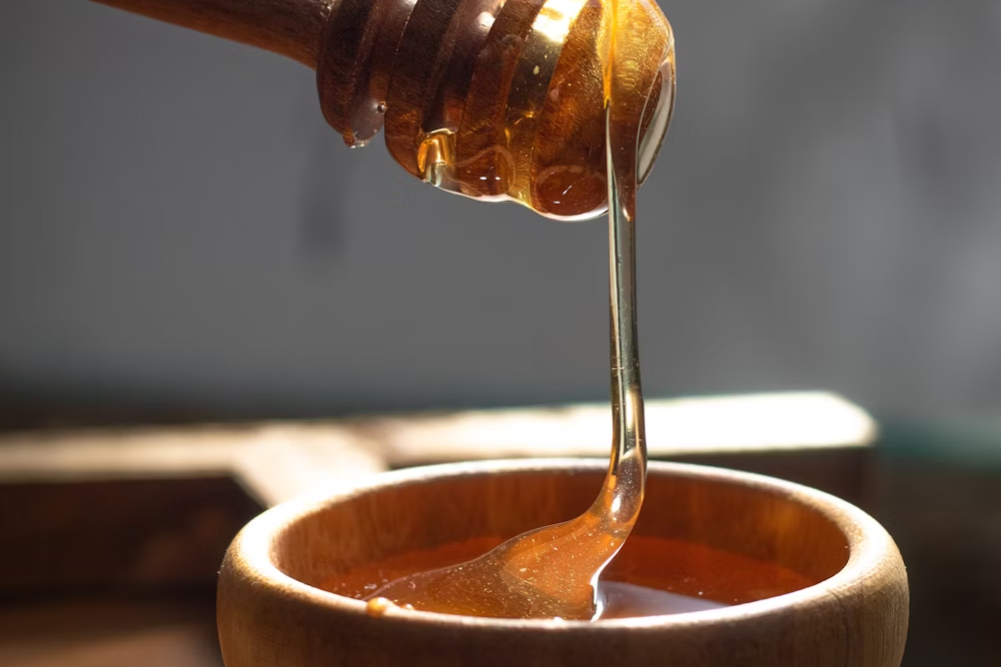Dance your way to wellbeing
Feeling sad, stiff or suppressed? Turn on some music, turn off inhibitions and dance your way to happiness and health.
How does dancing make you feel? Dance allows you to express, connect, release, remember and rejoice. Dance is a silent, universal language transcending age, era and culture. A baby bobs to “baa baa black sheep”, a Sufi spins in surrender, Indigenous Australians commune through corroboree — all dancing to the same eternal rhythm.
Are you moved by dance? Who could forget the choreography highs of Ginger and Fred, Singing in the Rain, Flashdance, Fame, Footloose, Dirty Dancing, Saturday Night Fever, West Side Story and La La Land’s opening sequence?
Dance moves you because you’re made to move. According to quantum physics, everything is in perpetual motion. Electrons in your body whirl around in an atomic dance, creating the appearance of solid matter, though you’re actually 99.9 per cent space.
Nature’s dance is pervasive as plants sway, waves flow, flames dart, birds soar and stars swirl. Dance creates harmonious communion with one’s internal and external environment. Though there are endless excuses not to trip the light fantastic, everyone can enjoy and evolve through dance.
Dr Disco
Mindful movement shifts your mental, physical and spiritual state in powerfully transformative ways. A 2016 study by the US National Institutes of Health (NIH) found that regular dancing is correlated with greater physical, social and cognitive benefits.
Jason Gauci, director and principal teacher at Sydney ballroom school 1 Step Forward, has witnessed the wonders of dance over decades. “It taps into all sides of our humanity. It keeps one fit through toning and cardiovascular activity, you need to connect emotionally with your partner, you’re constantly using your mind to know what to do next and to keep time, you’re connecting and reading social queues while paying attention to grooming, posture and pose.” Studies support this as research found that a weekly ballroom dance class can decrease blood pressure and cholesterol, improve balance, improve cardiovascular health, increase lung capacity, strengthen weight-bearing bones, slow bone loss, strengthen muscles and lower risk of obesity and type-2 diabetes. Dancing can burn nearly 600 calories an hour. It seems groove is in the heart according to an Italian study which discovered subjects with heart failure found waltzing improved their endurance and breathing more than controls on a treadmill or bike.
Dance moves you because you’re made to move.
Gopali Nissen, Kuchipudi dancer, says, “Since 12 I’ve suffered from spasmodic dysphonia which makes speech strained. Dance enabled me to express myself without talking and I overcame fears to perform in front of thousands. After years of fatigue and brain fog my body became very strong and my memory improved.”
Former professional ballerina Tonia Kelly, who runs Inner Ballerina Adult Ballet Classes says, “I had bow legs and it was suggested I practise ballet to correct them. I learned to rotate my legs from the hips and that corrected the problem. I now have fabulous legs!” Kelly is amazed at the benefits of ballet. “My students’ posture, flexibility and mood improves, and they make new friends who share the same interest. I have some special needs girls who come to my classes. Their co-ordination and spatial awareness have improved dramatically.”
Dancers often notice increased energy like Jasmine Oh, a 5 Elements Dance facilitator. She says, “What initially attracted me to dance as a child was the freedom to move in a meditative flow state, and what held me captive is the incredible healing and recharging results. I transform stagnant energy into activated expression.”
Diane Tatum, eurythmist, a faculty member of Pacifica College of Eurythmy and Kamaroi Rudolf Steiner School, feels dance was a lifesaver after mental burnout. “Doing eurythmy helped me recover my qi because that’s what it’s made for — enlivening and reconditioning the organs of the body, through harmonious movements.” Tatum uses therapeutic eurythmy exercises regularly. “At school recently a nine-year-old boy was on his way to sick bay with a headache that was so bad he had tears in his eyes. I showed him what to do to make his headache go away. Within 10 minutes he was smiling and on his way back to class.”
Free your mind
Moving in the moment gives one a mini break from daily stresses. Letting loose has been shown to reduce stress, ease anxiety, decrease depression and raise self-esteem.
Kelly finds that dancing is her shortcut to bliss, saying that “dancing makes me happy. I dance in the kitchen, dance in the nude, bop to music in the car, dance with my dogs. It uplifts my spirits.”
Nissen agrees. “Dance gives me an endorphin rush that makes me happier and more focused.” Similarly to Kelly and Nissen, Oh also finds solace in dance. She says, “Whenever I feel mentally blocked, sad, frustrated, overwhelmed, riddled with self-doubt dance helps me overcome negative emotions. Dancing is a way to experience a powerful high without drugs and alcohol.”
Nature’s dance is pervasive as plants sway, waves flow, flames dart, birds soar and stars swirl.
It turns out that dance was the only activity that improved both cardiovascular fitness and reduced the risk of cognitive impairments like dementia according to a New England Journal of Medicine report tracking adults for 21 years. A 2013 Psychology Today article also concluded “frequent” freestyle dancing can reduce dementia by up to 76 per cent.
Kelly noticed dance has boosted her brain. “Dancers need to have quick thinking and good memory skills.” Whereas Kamaile finds that dance has improved her cognitive function, saying that “co-ordination is everything, and practice makes perfect.”
“It’s never too late to learn dance,” says Nissen, who began Indian dance at age 32. Socrates learned to dance when he was 70 because he felt he’d neglected an important part of himself.
“Dance builds body confidence,” Oh says. “Some of my students have rematerialised their sensuality through releasing trauma that may have been stuck in the physical body.” Kelly has overcome her shyness, declaring that “Dance has given me a quiet confidence to face almost any social situation.” Year 5 children have blossomed under Gauci’s dancesport lessons. “I have seen it give very shy, withdrawn students the confidence to get up in front of people and perform.”
Gives you wings
Dance can be a spiritual practice. As dancer Isadora Duncan said, “Dance is the movement of the universe concentrated in an individual.”
Tatum explains, “Eurythmy has that cosmic aspect to it, which is why it’s so compelling to do — you feel like you’re a being of pure soul and spirit, working on and through your body. So when we reach those states where we’re in the world of the imagination, inspiration and intuition, there’s something truly transcendent and divine about life. The technique in eurythmy is akin to the flow of love: you have to generate a steady stream of that juicy, inner glowing warmth that flows from your heart and into the space around you.”
Oh loves to teach the divine dimension of dance, adding that “Reaching a dance-inspired ecstatic state in free-flow dance has deepened my connection to my inner self and entirely transformed my spiritual evolution. I experience dance as a meditative state, where through breath, music and movement I can achieve spiritual activation.”
Indigenous cultures use dance to tell stories, heal, connect with spirits and preserve ancestral traditions. Nissen is following the steps of ancient India’s temple dancers, as “Dancing makes me feel like an instrument engaged in sharing history through devotional stories.”
Social dance
Dancing unites rather than divides. Tatum says, “I recently choreographed a Greek-style dance for a group of fathers of children at Kamaroi School for the spring festival. What an uplifting experience for the whole community to see these men moving together with so much enjoyment and mastery. Usually, when men move together, it’s sports-based and competitive, with winners and losers. When you’re dancing, everyone’s a winner!”
Letting loose has been shown to reduce stress, ease anxiety, decrease depression and raise self-esteem.
Oh appreciates this. “At the end of the class there’s nothing more beautiful than a room of people genuinely connected to each other.” Gauci has witnessed relationships forged from dancing. “It’s a unique experience seeing boys and girls who don’t want to dance with each other because the opposite gender apparently has “germs”. By week three, they all have a partner and start feeling comfortable together. Once I had to change a partnership, thinking it wouldn’t be a big deal. As soon as I moved them, they both burst into tears. That was when I realised that the bond shared through partner dancing is much stronger than it seems.”
Dance opens opportunities to connect with other dancers, to travel for competitions or classes or to explore the cultural origins of dances. Kamaile moved from Sydney to Hawaii to further her dance career, saying, “I’ve meet so many people throughout the world, many are my brothers and sisters now.”
Step up
Would you prefer partner, solo or group dancing? Private or group classes? Whether you want to bachata, boogie, Charleston, conga, flamenco, foxtrot, freestyle, hip-hop, hula, hustle, jive, moonwalk, salsa, samba, tango, tap, waltz or twist and shout … it simply takes one step after another. Unsure what suits you? Try watching different dance styles or going for a trial class. If you like to dance in the dark with nobody watching consider No Lights No Lycra. With 75 locations worldwide, 30,000 people enjoyed this one-hour low-cost, low-light disco phenomenon in 2018.
Want to encourage your tiny dancer? Kamaile suggests, “Enrol your kids in classes, let them try out different styles for a few months and then they can make the decision of what they really like.”
Nissen has always encouraged her talented daughter to dance by dancing with her. She says, “Dance with your kids! Teach them the joy of movement. Show them great dancers.” With this, Kelly agrees: “I think the best way parents can encourage their children to dance is to take them to live ballet or musical theatre performances.”
Blame it on the boogie
Irrespective of their physical capacity everyone can find a dance style to suit them.
“Dancers should know their bodies well, know when to push their limits and always be sensible.” Nissen finds the best way to prevent and heal an injury is to “warm up with gentle yoga or stretches. Build up slowly. Once your body is accustomed, daily practice is ideal.”
Kelly says, “Injury prevention and strengthening through Pilates, yoga, gym work and bodywork are great tools to stay dancing fit.” It’s also helpful to get the recommended footwear.
What the world needs now
Imagine if everyone danced regularly. A Deakin University study of 1000 people found that those who danced were happier. Oh talks about the transformative potential of dance, saying, “It’s time people realised that dance is an avenue to break free from suffering, to heal and awaken us to who we really are as individuals and collectively, and most of all to celebrate the beauty and gift of life.”
Gauci believes the world would be a better place if more people danced, “especially through partner dancing; you have to truly hold people’s hands and let them into your personal space. I teach ballroom dancing for year 5 students and started doing so just after the Cronulla Riots in 2005, when cabinet minister Sandra Nori promoted that traditional values are needed for the kids to show respect for each other through ballroom dancing. The program started in the Sutherland Shire where the problems occurred and then grew exponentially to hundreds of public schools around Sydney and is still going very strong 15 years later.” Gauci finds the euphoric effect of dance is unforgettable. “I always think of the Billy Elliot scene when they ask him how dancing makes him feel, and he says it’s like electricity going through his body.”








